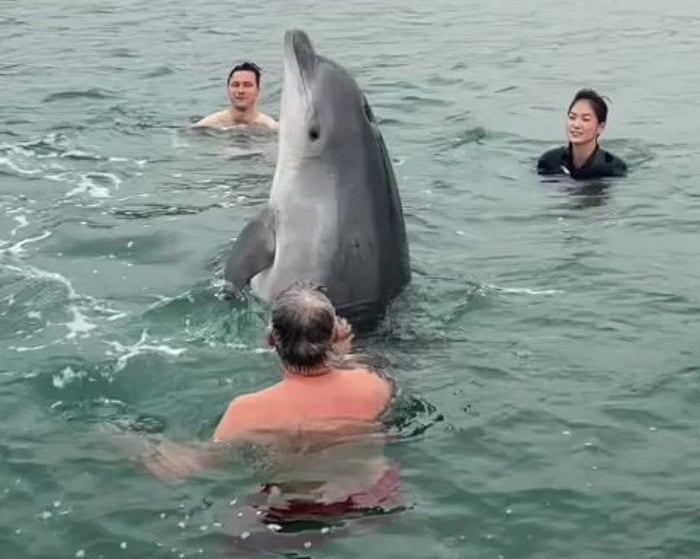Authorities are warning people to stay away from an injured dolphin that was recently seen playing with swimmers off Dorset’s coast. The dolphin, nicknamed Reggie, was filmed in early August interacting with a group of swimmers in Lyme Bay, appearing to dance and enjoy belly rubs. However, experts say these encounters can be dangerous for both humans and dolphins.
The Marine Management Organisation (MMO) expressed serious concerns after seeing videos of people getting too close to the dolphin on social media. Reggie, a bottlenose dolphin swimming alone, has a visible wound on its side near the dorsal fin – likely caused by a boat propeller.
While the interactions may seem harmless and fun, the MMO warns that human contact can make dolphins less cautious, leading to injuries or even death. Dolphins may also become aggressive when disturbed. The organisation advises people never to swim with, touch, feed, or approach dolphins. If a dolphin comes near, swimmers should calmly move away.
Conservation groups explain that dolphins face threats not just from boats and jet skis, but from any close human interaction. They recommend keeping a safe distance and limiting observation time to about 15 minutes. Around 700 bottlenose dolphins live in UK waters, where they sometimes encounter swimmers and boats – interactions that can put these wild animals at risk.
FAQS
### **FAQs About Swimmers Warned to Stay Away from Injured Dolphin in Dorset**
#### **General Information**
**Q1: Why are swimmers being warned to stay away from the injured dolphin?**
A1: For safety—both for the dolphin and people. Disturbing it could worsen its injuries or cause it stress, and dolphins can behave unpredictably when hurt.
**Q2: Where exactly was the dolphin spotted?**
A2: Reports indicate it was seen in Dorset waters, but local authorities or wildlife groups can provide the exact location.
**Q3: How badly is the dolphin injured?**
A3: The extent of the injury isn’t always clear, but experts advise keeping a distance to avoid further harm.
#### **Safety & Legal Concerns**
**Q4: Is it illegal to approach an injured dolphin?**
A4: Yes, under the UK’s Wildlife and Countryside Act, disturbing protected marine animals like dolphins can lead to fines.
**Q5: What should I do if I see the injured dolphin?**
A5: Keep your distance, avoid loud noises or sudden movements, and report it to local marine rescue.
**Q6: Can the dolphin be dangerous to swimmers?**
A6: Injured or stressed dolphins may act defensively, so it’s best to stay away.
#### **Helping the Dolphin**
**Q7: Who is helping the dolphin?**
A7: Marine wildlife organizations like BDMLR or the RSPCA are likely monitoring the situation.
**Q8: Can I try to help the dolphin myself?**
A8: No—untrained handling can harm the dolphin or put you at risk. Always call experts instead.
**Q9: What are rescuers doing to treat the dolphin?**
A9: They may assess its condition, provide medical care if possible, or monitor it to see if it recovers naturally.
#### **Environmental & Wildlife Concerns**
**Q10: Why is this dolphin in Dorset?**
A10: Dolphins are common in UK coastal waters, but injuries or illness might cause them to stay near shore.
**Q11: Could this be a sign of a bigger problem in the area?**
A11: Possibly—pollution, fishing nets,




